Clothes that don’t look frumpy or messy while seated are hard to find if you are a wheelchair user, and accommodating for leg bags, pouches and cathing with limited hand function can be even more demanding. Thankfully, adapting is a skill that most of us with spinal cord injuries know well, so modifying and creating the adaptive clothing of your dreams is doable. All you need is a vision and a sewing machine — plus a willingness to learn, try, fail and ultimately, craft your garments to fit your needs.
“The thing that has helped me the most lately is modifying clothes to make my life easier. I love wearing jumpsuits and overalls. But peeing is a bitch in them.”
Over 20 years as a T12-L1 paraplegic, Minna Hong has learned to embrace her creative side to make her fashion work for her. “The thing that has helped me the most lately is modifying clothes to make my life easier,” she says. “I love wearing jumpsuits and overalls. But peeing is a bitch in them.”
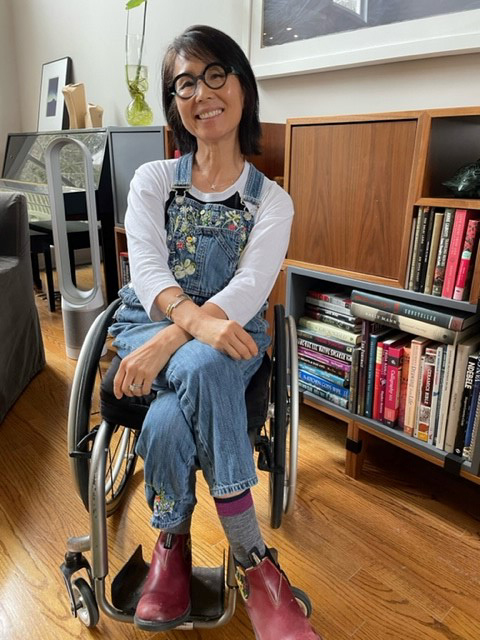
Her solution? Placing snaps in the crotch area for easy access. Not only has the simple modification made cathing easier, it has been a game-changer in what she wears. Another hack to make cathing easier is wearing thigh-high socks or tights. “If I wear stockings or tights with a dress, I cut out the crotch because they’re hard to take on and off,” she says.
Hong’s modifications are intended to make life easier, but the fit is important, too. “I cut the sides of a T-shirt so it won’t ride up. I also cut the front of shirts so they are short in the front and long in the back.”
Whether you’re tinkering with the fit or the function, learning to adapt your wardrobe can save you money, open up a world of possibilities and lead to dramatic improvement in your day-to-day life.
An OT Embraces Her Passion
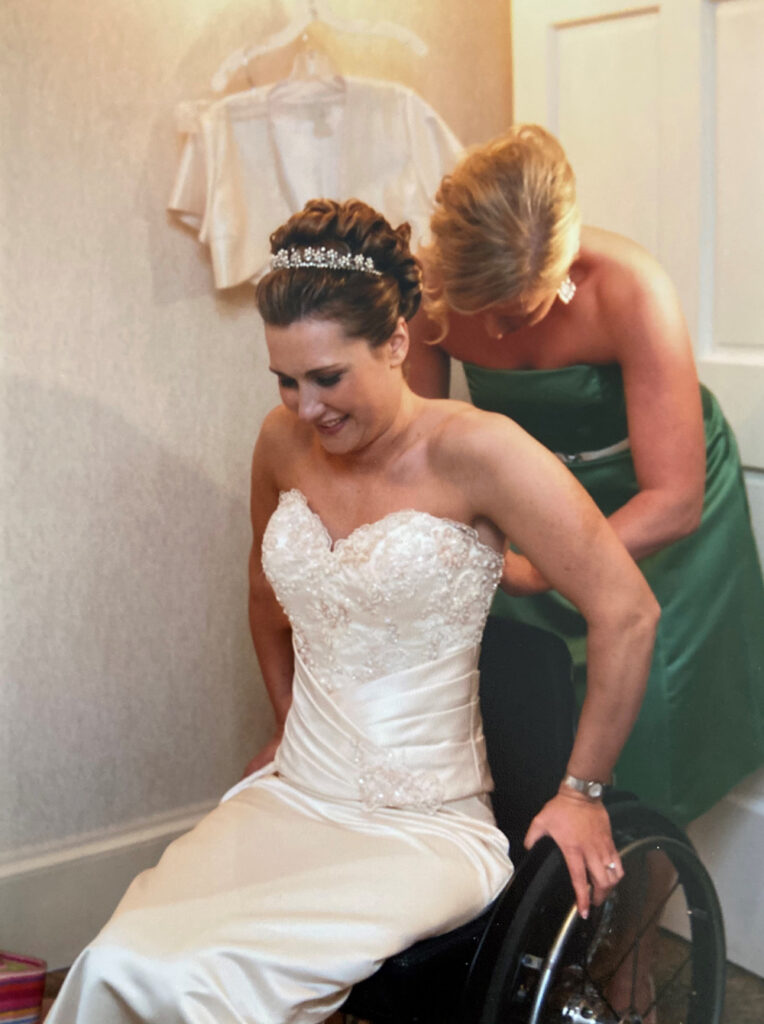
Emily Seibert was an aspiring physical therapist when she sustained a T8 spinal cord injury just before her 17th birthday. She ultimately decided to switch to occupational therapy, in part so she could embrace her creative vision for modifying and adapting things. Clothing was one of the first areas she focused on. “After my injury, in the mid-90s, the pants were high-waisted, and I didn’t want the jeans sitting under my boobs while I was in my chair,” she says. “So, I studied them and figured out how I wanted them to fit.”
Seibert used the few sewing skills she had learned in her high school home economics class and attempted to adapt her jeans to fit properly. She learned to work the foot pedal of the sewing machine with her hand or elbow. She used a seam ripper to remove the waistband from the front and sides of the jeans. “I figured out how much fabric to trim away and sewed the waistband back on, so the button, buttonhole and zipper were where I wanted them.”
“I envisioned the one-piece dress as two pieces: a fitted top and a less poofy skirt with more taper — if we removed the extra material.”
Once mid-rise jeans became fashionable, the fit was better, but she still needed the length for her 5’9” frame. She learned what to look for in off-the-rack clothes that will make them easier to modify. “I always carry a small measuring tape in my backpack to measure the inseam of pants,” she says. “I rarely try on pants in stores, but I always measure the inseam.” Checking the pant cuff is also atop her list.“ I study the hem in pants to see if I can let them out to the length I need,” she says.
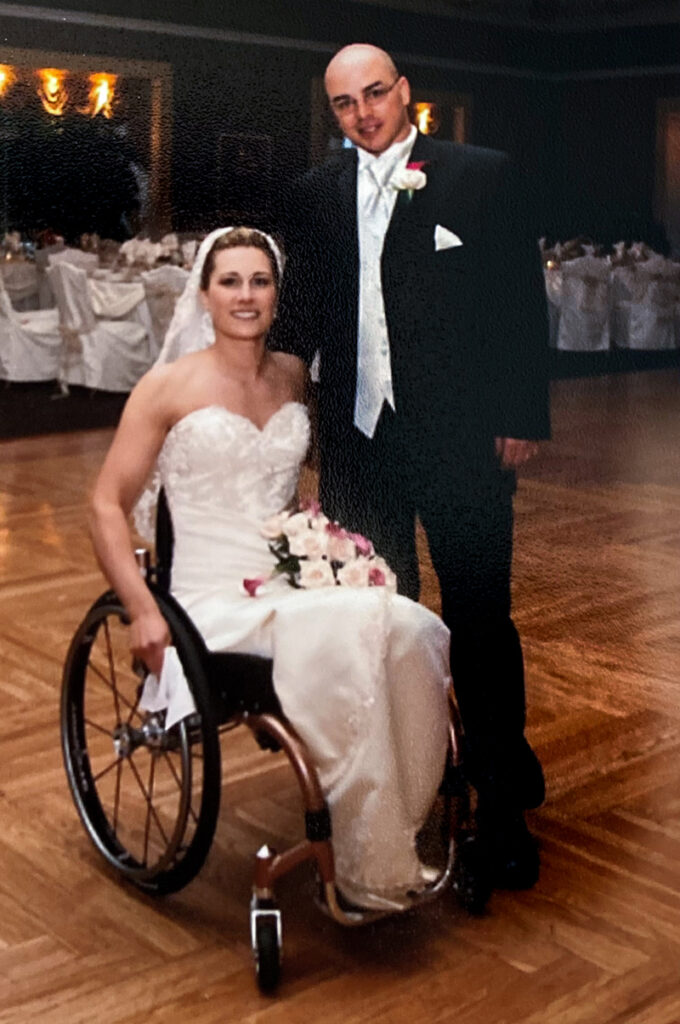
When Seibert got married, she only had three months from the day her fiancé proposed until her wedding since her soon-to-be-husband was in the military. That meant little time for alterations and more need for creative thinking.
In college, she’d discovered two-piece dresses fit her well. By thinking outside the box, she was able to find a timely solution by modifying a one-piece dress from David’s Bridal. “I envisioned the dress as two pieces,” she says, “a fitted top and a less poofy skirt with more taper — if we removed the extra material.” A local seamstress helped her turn the off-the-rack purchase into the wedding dress of her dreams.
Seibert recently put her sewing skills to work again adapting some jeggings from Old Navy. “I like the 3-inch waistband in the back, but it’s too high in front, and I find it’s harder to get the pants over my hips. I cut the elastic waistband from the hips to the bottom of the waistband in front and finished off the edge,” she says. “They fit perfectly.”
A Self-Taught Seam-ster
A perfect fit is always nice, but sometimes you simply don’t want to show the public your crack. That’s what inspired Chris Murphy, a T12 para, to go to work on his shorts. Murphy, a 1996 Paralympic bronze medalist in sailing, wanted shorts that wouldn’t show his crack while playing wheelchair basketball with the Charlotte Hurricanes. He was familiar with companies that created adaptive clothing, “But I’m cheap, and those clothes were cost-prohibitive. I had a sewing machine and decided to give it a whirl.”
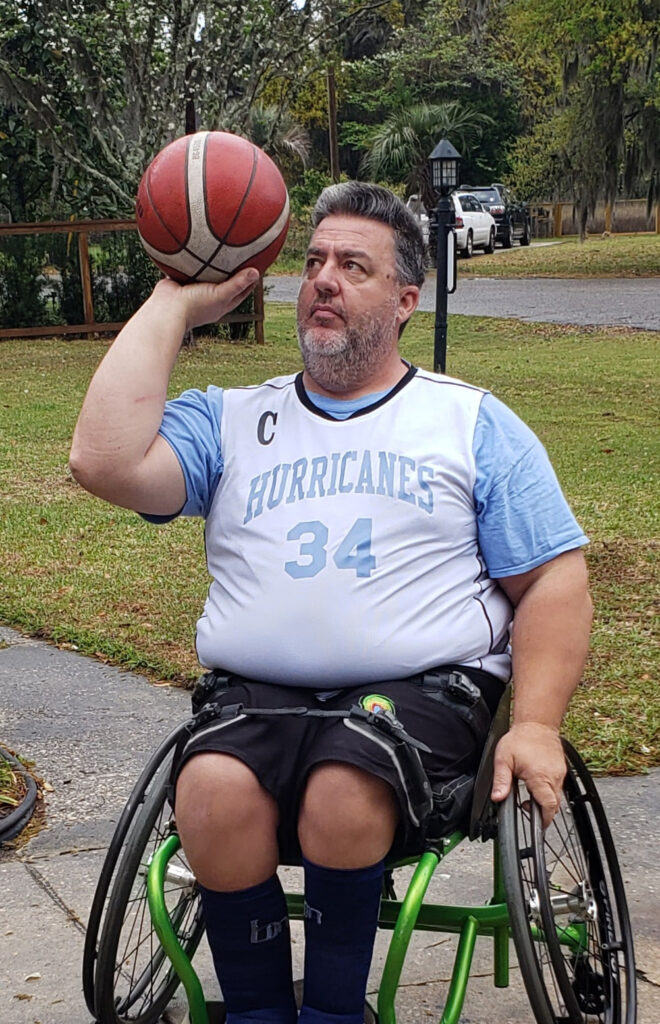
Outside of a trimester of sewing in home ec during high school, Murphy is completely self-taught. He learned from others on social media, watched YouTube videos and asked a friend for advice. He ended up buying enough spandex material for one pair of gym shorts at the low price of $10 per yard. He ended up with a pair of perfect-fitting shorts; today he has six.
His adapting didn’t stop there. He has developed a simple hack to keep his off-the-rack pants up during transfers. “I add a crescent-shaped piece of material — about 2 to 3 inches — starting at each hip,” he says. “It’s enough material for the back of the pants to come up high enough in a seated position.”
His knack for adaptation is earning him a reputation with wheelchair-using friends. “There’s a guy I play basketball with and he bought a pair of overalls, but when he sat in his chair, all that extra material bunched up in the front,” says Murphy. “He came over one day and I picked apart the seam. I pulled the bib all the way down, then stitched it across the front. He really likes it.”
Professional Help
If you want to adapt clothing, but you don’t have the ability or know-how, a tailor or seamstress is a great option. Explain what you need and they can use their experience and skills to help you modify clothing that works for you. Tailors can remove back pockets and buttons or rivets that may cause skin breakdown, as well as front pockets that create extra bulk. Another easy modification a tailor can assist with includes switching out a button, snap, or metal fastener for either a Velcro or magnetic closure. Finally, many female quads will create an opening in the seam in the crotch of their pants for easy-access catheterizing. A zipper or Velcro works to close the seam.
NEW MOBILITY editor Ian Ruder has cultivated a 20-plus year relationship with his seamstress and has a closet full of perfectly adapted pants to show for it. “I told her what my ideal pants looked like and paid her to build a pattern that incorporated all of my needs,” he says. That includes no buttons or rivets, a comfortable elastic waist, high back and room for his leg bag. He’s even built in subtle seams to help him keep track of whether the pants are on correctly.
He keeps an eye out for bulk fabric he likes and then pays her to stitch the pants together. “Over the years we’ve honed the pattern as my needs and body have changed,” he says. “They’ve held up amazingly well — better than anything I’ve bought off the rack — and helped me avoid any skin problems.”
Ruder urges anyone who finds a good seamstress or tailor to hold on to them. “Knowing my clothes are working for me takes another thing off my mind and makes my life easier,” he says.
The Jeans of Her Dreams
Heidi McKenzie had studied fashion merchandising before sustaining a T4 SCI in 2007, but after her injury, clothing was the last thing on her mind. “I wore a lot of pajama pants that were easy to get on,” she says. “In the beginning, I didn’t care to look good, because I wasn’t going anywhere.” Her mindset changed when she met 26 other women with disabilities at the Ms. Wheelchair America pageant. “That was when I said to myself, ‘OK, I want to get back into fashion.’”
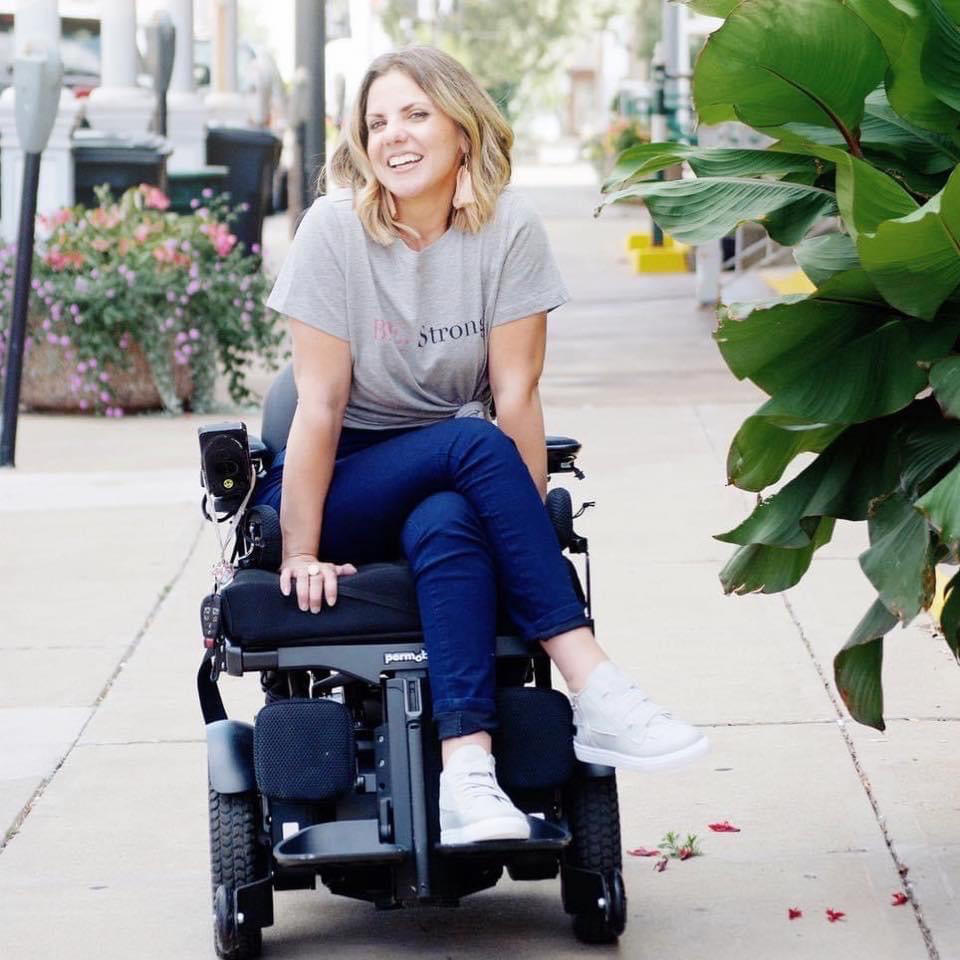
She returned to college to finish her fashion merchandising program but ended up graduating with a business degree. That led her to an online program to learn how to develop an adapted clothing line. She chose to focus on jeans because they were something she enjoyed before her accident and struggled with after. “I had a difficult time finding jeans that would cover my crack and fit comfortably on my stomach,” she says. “The length and the pockets were never right [with] off-the-rack jeans. So, I constructed a pair of jeans to fix all those things.”
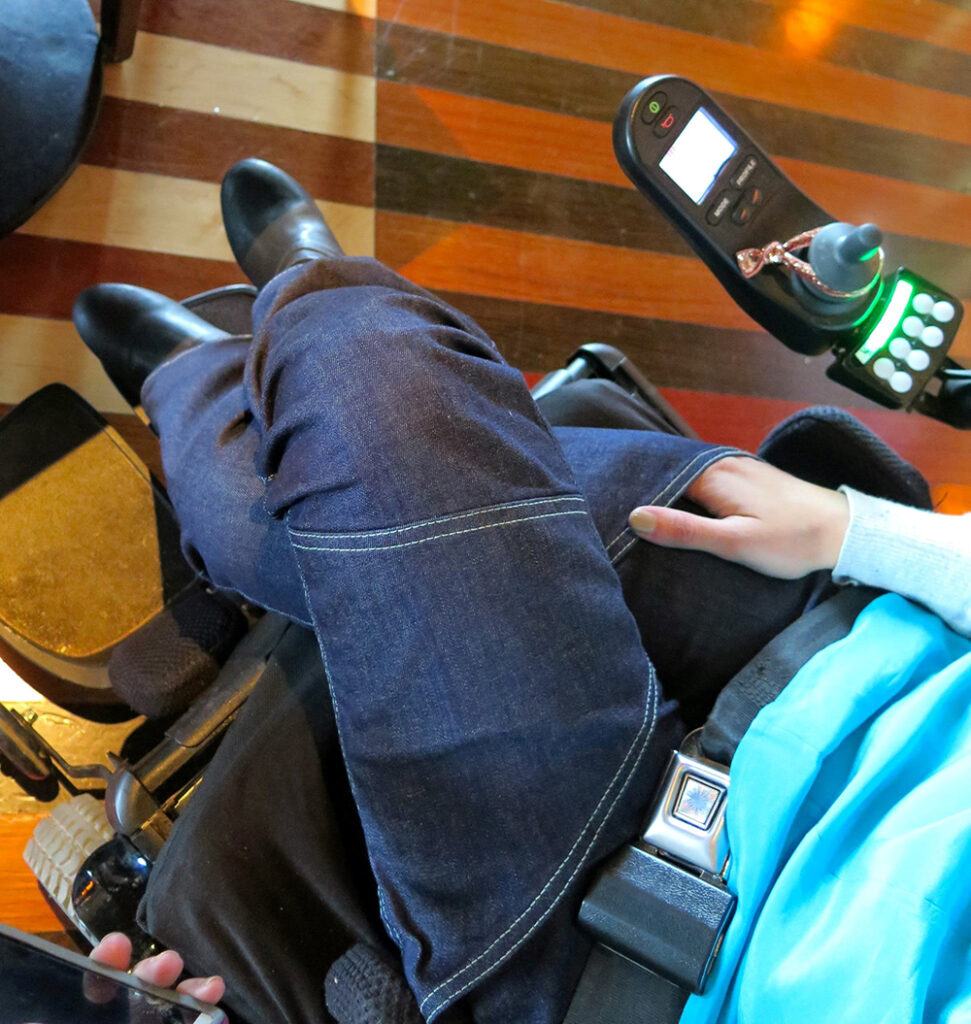
McKenzie sketched a pair of jeans to include a higher waist in the back, a longer inseam, an opening for catheterizing for women and easily accessible pockets. A freelance designer in North Carolina assisted her in constructing the first prototype.
The process took three years, but in 2015, Alter Ur Ego was born. While the business continues to sell its jeans, it’s hard to sustain an adaptive fashion line because the product isn’t mass-produced. The jeans need to be priced high just for her to break even.
McKenzie sums up what she’s discovered about fashion and clothing as a woman with a spinal cord injury. “I know it’s a cliché, but when you look good, you feel good. Find an article of clothing that makes you feel good, and base your whole style around it.”
Support New MobilityWait! Before you wander off to other parts of the internet, please consider supporting New Mobility. For more than three decades, New Mobility has published groundbreaking content for active wheelchair users. We share practical advice from wheelchair users across the country, review life-changing technology and demand equity in healthcare, travel and all facets of life. But none of this is cheap, easy or profitable. Your support helps us give wheelchair users the resources to build a fulfilling life. |


I have lots of ideas
I’m a male quad for the last 45 years and started wearing “women’s” jeans back then, and still do. They are fuller in the seat (no bum crack) and don’t have the extra fabric in the crotch that just bunches up. Unpick the rear pockets (smoother seat) and put one back on my inner left calf to hold keys, phone, wallet, etc. Now I’m 65, less fit, heavier and rely upon slideboard transfers, I sew nylon on the bum parts of jeans that makes them slide so much better.
I have found that Shorts best fit me in my chair! Problem is keeping them up in transferring!
I’ve had my pants modified for 20 years by going to an alterations place and asking them to sew in a zipper in the crotch seam. It’s such freedom to have independence! When I’ve outgrown pants or haven’t worn them in awhile it’s hard to just toss nice clothes away. I can’t take them to a Goodwill so I’ve taken them to the rehabilitation center close to me. I hope someone else can wear them or at least see how the zipper is sewn in so they have the same limitless freedom. Being to,d I can only wear elastic wait pants when I was first injured wasn’t going to do.
ABL Denim is a great place for adaptive jeans and I have bought several pairs from them. If there is an Abilities Expo near you you will find more adaptive clothing sellers. Here is a link to some other disability clothing:
https://www.disabilitydame.com/adaptive-clothing
For more formal ware for men, look at what is called an Eton Jacket in the trade. They can be styled as a suit jacket or tuxedo. They are short so don’t get caught in wheels, but be sure to wear high waisted slacks!
I buy long t-shirts as night gowns and slit them up the back to just above the waist so they can open in the back when I sit in my chair. It also allows for easier toileting.